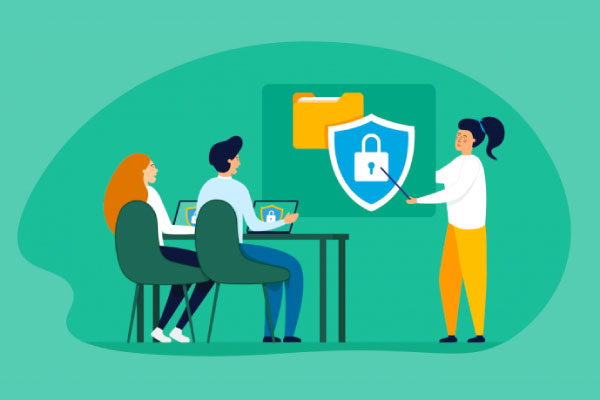Cybersecurity is one of the most in-demand career fields today, offering lucrative opportunities for those with the right skills. If you’re considering a career in cybersecurity but aren’t sure where to begin, this roadmap will guide you step-by-step through the skills, certifications, and tools you need to land an entry-level role within 7 to 10 months. Whether you’re new to tech or transitioning from another industry, following these steps will help you build a strong foundation and gain the confidence to enter this exciting field.
Step 1: Build a Solid Foundation in IT
Before jumping into cybersecurity, it’s crucial to have a basic understanding of core IT concepts. This step ensures you have the groundwork to troubleshoot, install, and manage basic systems—a prerequisite for working in the field.
Key Topics to Cover:
- Installing Operating Systems
- Managing Common PC Issues
- Networking Essentials
A great starting point is the CompTIA A+ certification, which covers foundational IT skills. If you commit 3-5 hours of study daily, you can complete this step within 1-2 months. Don’t skip this stage if you’re new to tech—being comfortable with these basics is vital for success.
Step 2: Learn Computer Networking
Understanding how networks work is essential because cybersecurity heavily involves securing, monitoring, and even exploiting networks. Gaining expertise in computer networking will help you understand how data flows between systems, and how to protect it.
Topics to Focus On:
- OSI and TCP/IP Models
- Common Protocols (HTTP, HTTPS, TCP, etc.)
- IP Addressing and Subnetting
- Routers, Switches, and Firewalls
For certifications, CompTIA Network+ offers an excellent introduction to networking principles, while CCNA (Cisco Certified Network Associate) dives deeper into Cisco-specific concepts and tools. The CCNA is more challenging but carries extra weight on your resume. Allocate 1-2 months to this step.
Step 3: Operating Systems (Windows and Linux)
Operating systems are at the core of cybersecurity. Most systems you’ll protect (or investigate) will run on Windows or Linux. Start with one, based on your current familiarity, and then build knowledge in the other.
Key Learning Areas:
- File Permissions
- Logs Management
- User Management
Spend 1-2 months gaining practical experience with both. While CompTIA Linux+ can validate your Linux knowledge, it’s not as essential as networking or cybersecurity certifications. Use training platforms and hands-on practice to solidify your understanding.
Step 4: Learn Basic Coding
While you don’t need to be an expert programmer to start in cybersecurity, coding skills can enhance your effectiveness in the role. The most valuable programming language to learn is Python due to its simplicity and versatility within cybersecurity tasks.
Recommended Skills:
- Python basics, including automation scripts
- Bash scripting (for Linux environments)
- PowerShell scripting (for Windows environments)
Python tutorials (like the ones mentioned on the YouTube channel) are a great place to begin—start with beginner-friendly lessons. Spend about a month practicing and applying your coding skills to common security scenarios.
Step 5: Cybersecurity Fundamentals
By this stage, you’ll have the foundational skills in IT, networking, and coding. Now, it’s time to shift into cybersecurity-specific concepts. This involves identifying vulnerabilities, protecting data, and defending systems.
Recommended Certifications:
- CompTIA Security+
- Google Cybersecurity Professional Certificate
CompTIA Security+ is especially well-recognized and often a requirement for entry-level positions. Allocate around 1-2 months to master cybersecurity fundamentals and complete an introduction to defensive (blue team) and offensive (red team) strategies.
Step 6: Defensive Security (Blue Team)
Defensive security focuses on safeguarding systems and responding to threats. Mastering this area will prepare you for roles in monitoring and defending network systems.
What to Learn:
- Threat detection and analysis
- Log management and interpretation
- Network security best practices
Certifications to Explore:
- Cisco CyberOps Associate (well-respected certification in defensive security)
- PNSA by TCM Security (hands-on training for realistic network defense tasks)
- PTL1 by Security Blue Team (focused on real-world defensive tasks)
Spend 1-2 months mastering these skills and certifications.
Step 7: Offensive Security (Red Team)
Offensive security involves identifying weaknesses through penetration testing and network scanning. This knowledge allows you to think like an attacker and defend systems more effectively.
Key Focus Areas:
- Network scanning techniques
- Vulnerability exploitation
- Simulated hacking practices via safe testing environments
Platforms for Practice:
- TryHackMe
- Hack The Box
Certifications to Pursue:
- eJPT (eLearnSecurity Junior Penetration Tester)
- CompTIA PenTest+
- PJP by TCM Security
Dedicate 1-2 months to building practical offensive security skills.
Step 8: Hands-On Practice with Labs
Employers value real-world experience, so supplement your learning with hands-on practice. Labs and simulations help you develop the critical skills required in the field. Use online platforms like RangeForce, Immersive Labs, or Hack The Box, and document your projects or challenges to showcase during interviews.
Tips for Standing Out to Employers
While certifications are valuable, employers are more interested in practical skills and how you apply them to solve real-world problems. Showcase your expertise by:
- Creating and maintaining a GitHub portfolio of your projects
- Participating in CTF (Capture The Flag) challenges to test and demonstrate your skills
- Taking on freelance or internship opportunities to gain hands-on experience
How Long Will It Take?
If you can dedicate 3-5 hours of study and practice daily, this roadmap can take around 7-10 months to complete. However, cybersecurity is a dynamic field, and everyone learns at a different pace. Don’t hesitate to take extra time if needed—it’s more important to thoroughly understand each step than to rush through.
Final Thoughts
The path to becoming a cybersecurity professional may seem daunting, but it’s achievable with the right approach. Follow this roadmap, stay consistent, and put in the effort to learn and practice. Remember, the cybersecurity field rewards curiosity, adaptability, and problem-solving skills.





